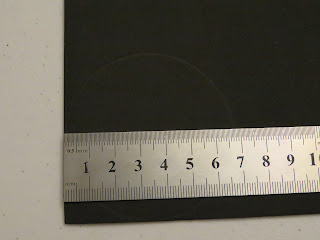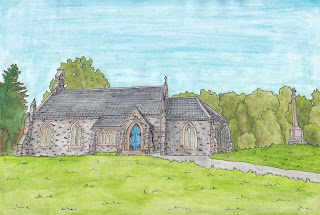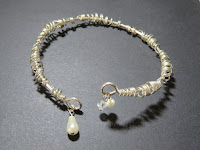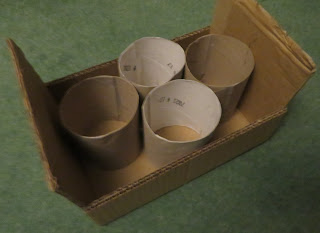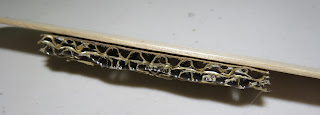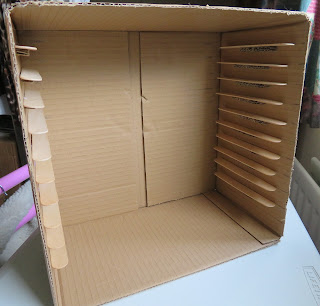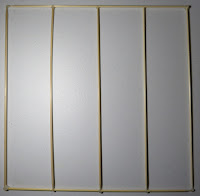
You will need:
2 x food tins (thoroughly cleaned)
Foam (black for the base + another colour to match whatever self-adhesive you choose)
Self-adhesive marble effect (or other self-adhesive to your taste)
Ruler
Pencil
Scissors
Double sided tape
I started by pressing the tins into the foam. I then measured the diameter (you'll need this later) and cut out the circles.

To make the foam rims, I used a ruler to measure the distance between the top of the tin and a bit below the sharp edges (on my tins 1.5 cm). I then marked 1.5cm and 3cm from the short edge of the foam and cut two strips. I created a ring with the foam and put it inside the top of the tin then marked and cut off any excess. I put a strip of double sided tape along the whole foam rim and carefully stuck the foam to the tin.
I then put an 'X' of double sided tape on the back of the foam base and stuck it inside the tin, carefully pushing out any air from the centre to the edge.
I then measured the height of the tins and marked it on the paper side of the self-adhesive marble.
To work out the circumference of the tins, I cheated a bit and used Google - all I had to do was type in the radius (half the diameter). The diameter of my tins was 6.75cm so the radius was 3.375cm which gave a circumference of 21.21cm - I rounded it up to 21.3, to make sure I wouldn't have any gaps. I then marked 21.3cm on the paper side too, and cut out the two pieces.
I peeled back about 5cm of the paper and carefully lined up the corners of one of the short ends with the top and bottom of the tin. Then I slowly pressed a section of the marble to stick it to the tin and peeled back more paper and repeated until the whole tin was covered. Repeat for other tin.
And there you have it! Two marble effect pencil holders ready to use!
If any of you try this, please leave a comment below to let me know how you got on...


